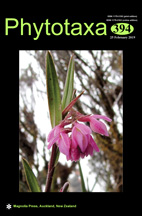Abstract
In this work we try to determine whether the modifications in the functional traits of a plant species, both morphological and phenological, and caused by the adaptive serpentinomorphoses syndrome are enough to differentiate a new taxon. For this purpose, Genista hirsuta subsp. lanuginosa, a western Mediterranean serpentinophyte (subserpentinophyte) with populations both on serpentines and outside them was selected. The study of functional types (functional traits, which link morphology with adaptations, and phenological reproductive and vegetative phases) was performed in both populations. The results showed that there were statistically significant differences between the two types of populations (serpentine and non-serpentine) with respect to some of the quantitative functional characters studied (plant height, crown diameter, Specific leaf area (SLA), and length of photosynthetic stems). Moreover, other differences were detected with respect to semi-quantitative and qualitative traits: location of renewal buds, branch type, morphology of aerial part, bark consistency, leaf tomentosity, morphology of the root system, and organ redness. Some of them are consistent with serpentinomorphoses syndrome, such as the existence of dwarfism (height of plants), cushion habit, macro-rooted plants and lower SLA (stenophylly) in serpentine populations, besides the presence of redness, which could be a character also linked to serpentinomorphoses. However, neither glaucescent organs nor glabrescence were observed (on the contrary, there is a greater general tomentosity in the plants of the serpentine population). In addition, phenological differences were detected, consisting of a generalized shortening of the phenophases and a certain delay in the reproductive phenophases in the serpentine populations, a characteristic trait in serpentine flora, and differences in sequencing phenophases. These facts lead to propose the use of phenology, in combination with functional traits, to detect serpentinomorphoses syndrome. The detected differences are enough to separate taxonomically the two populations of Genista hirsuta subsp. lanuginosa, proposing for the non-serpentine populations a new variety: var. silicicola nov.

